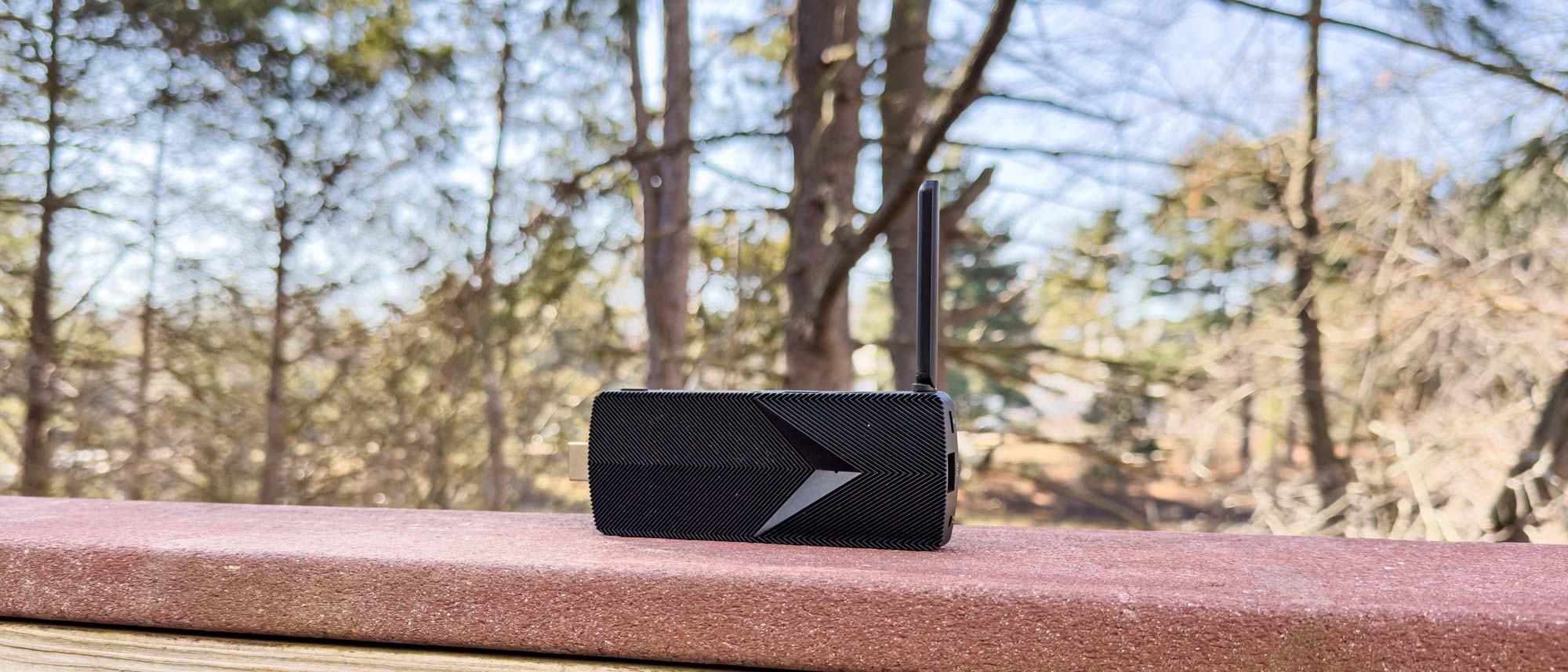Tom's Guide Verdict
The Azulle Access4 is a fanless mini PC stick that, while having a cool design, fails to impress in every other regard. Its underpowered Celeron processor struggles with more than basic tasks. This isn’t worth the cost.
Pros
- +
Unique design
- +
Good port selection for its size
Cons
- -
Too expensive
- -
Disappointing performance
- -
Might not fit with all TVs and monitors
Why you can trust Tom's Guide
Price: $309
CPU: Intel Celeron J4125
GPU: Intel HD 600
RAM: 4GB
Storage: 64GB
Ports: 1 x USB-A 3.0, 1x USB-C, 1 x GbE, 1 x microSD, 1 x 3.5mm audio jack
Size: 5.1 X 2 X 0.8 inches
Weight: 1.3 pounds
The Azulle Access4 shows how far mini PCs have come in recent years. This fanless stick plugs into an HDMI port on a TV or monitor and operates as a very low-powered computer. With Windows 10 Pro and a Celeron J4125 CPU, you would hope that the Access4 could handle some light daily use. That is not the case.
This mini PC suffers from severely hampered performance, likely due to the lack of active cooling. On top of that, the Access4 Pro is rather expensive at $309, making it very hard to recommend over its competitors.
As you’ll see in this Access4 review, I don’t think this PC is worth your time or money. It’s certainly a neat concept on the surface, but deep down, it fails to impress.
Azulle Access4 review: Price and availability
Azulle sells the Access4 for $309, though you might find it cheaper elsewhere if you look around. As a fairly inexpensive computer, the Access4 certainly has a lot of appeal. With a Celeron J4125 and a slim profile that plugs right into your TV or monitor, this PC looks good on paper.
But compared to the competition, I find it lacking. For example, the Geekom MiniAir 11 comes in at $249 with a Celeron N5095, 8GB of RAM, and 256GB of storage. (The latter two are upgradeable.) While it lacks the Access4’s stick body, it’s all around a much better mini PC for cheaper.
CPU to CPU, the XDO Pantera Pico released a couple of years ago competes favorably with the Access4 thanks to its Celeron J4125, 4GB of RAM, and 64GB of storage. It comes in at a starting price of $219, almost $100 less than the Access4 Pro. It’s a tiny cube that you can attach directly to your TV, as I did during the course of my review.
The Access4 has stiff competition and does little to stand out besides a slim fanless chassis.
Get instant access to breaking news, the hottest reviews, great deals and helpful tips.
Azulle Access4 review: Design
The Access4’s appeal comes down to its design. It’s a rather large HDMI dongle covered in cooling fins. It has an adjustable Wi-Fi antenna along the right side with ports all around. The black, industrial look certainly appeals to me. It should blend in well behind your TV or monitor, depending on your port arrangement.
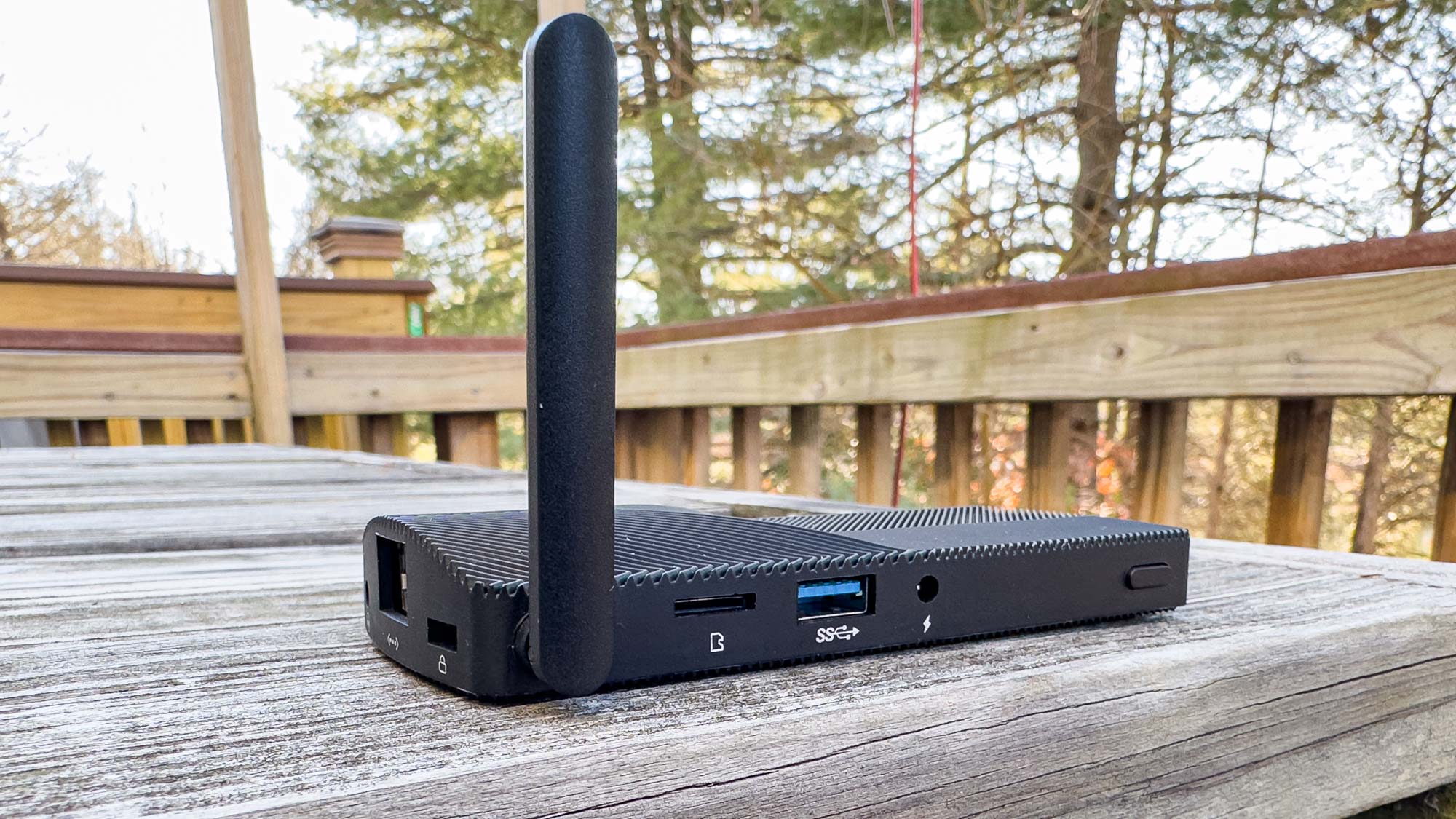
It’s also a hefty 1.3 pounds, which would concern me for TVs with side-mounted HDMI ports. The male HDMI plug sits flush with the Access4’s body with little apparent support and reinforcement. Over time, I worry about that. However, most monitors have downward-facing ports, so it shouldn’t be too much of an issue.
Azulle Access4 review: Ports and upgradeability
Considering its size, the Access4 comes with a surprising amount of ports. On the right side with the Wi-Fi antenna is the power button, a USB-A port, a microSD card reader, and the power jack. The back houses the audio jack, gigabit ethernet port, and Kensington lock. Finally, the USB-C port (which does power, data, and display out) sits on the left by itself.
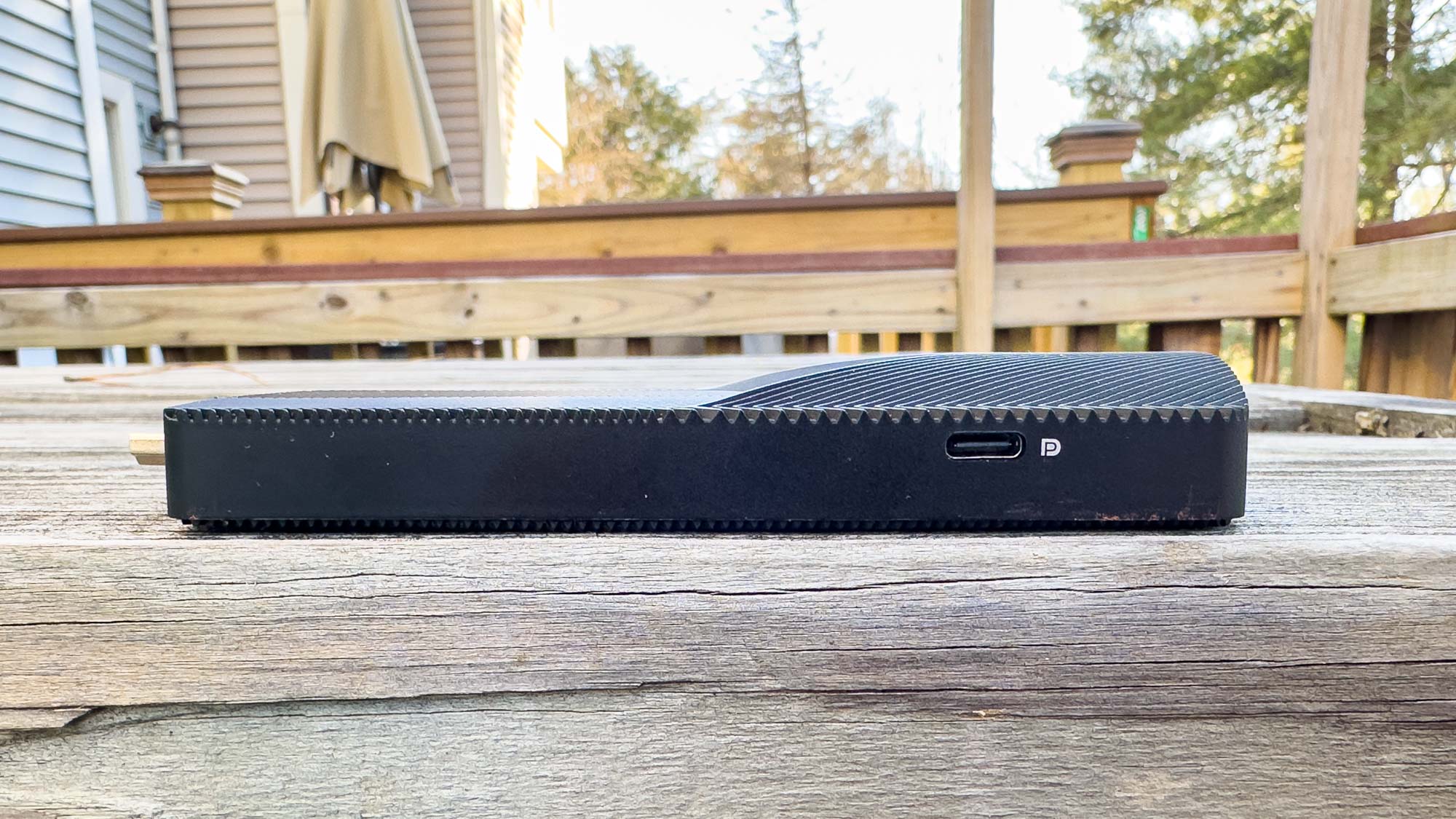
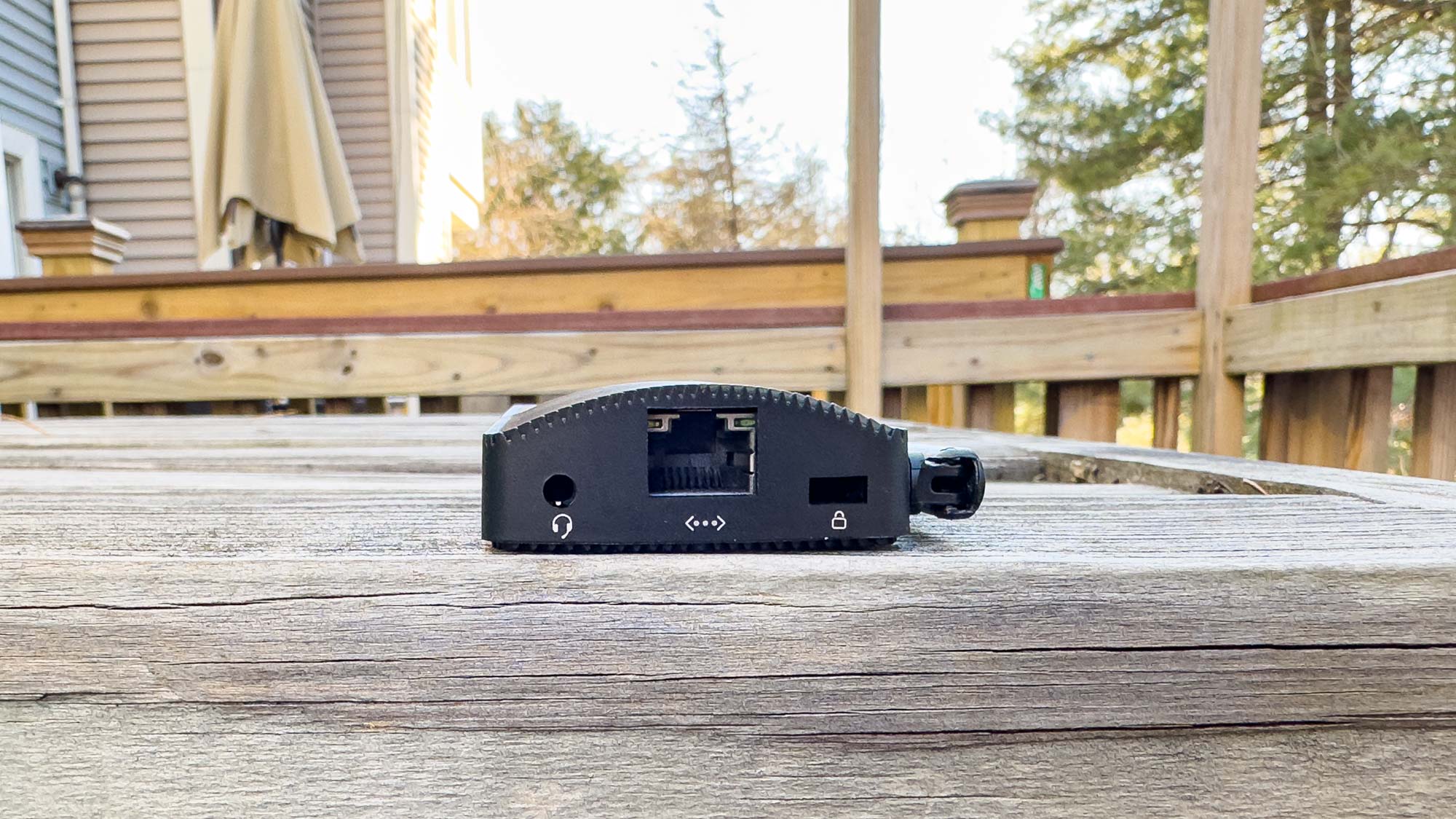
As a completely self-contained system, the Access4 does not feature any sort of upgradeability. In fact, I dared not even try to open the thing. You’re left with the 4GB of RAM and 64GB of storage that comes standard.
Azulle Access4 review: Performance
Make no mistake, the Access4 struggles with even the most basic tasks. The Celeron J4125 is grossly underpowered for modern desktop use, even more so without active cooling. Coupled with a meager 4GB of RAM, this mini PC stick frustrated me to no end.
Here are the benchmark results we could gather.
| Row 0 - Cell 0 | Access4 | MiniAir 11 | Pantera Pico |
| CPU | Celeron J4125 | Celeron N5095 | Celeron J4125 |
| Geekbench 5 (single / multicore) | 444 / 1300 | 652 / 2000 | 449 / 1485 |
| 25GB file transfer | N/A | 159MBps | 100MBps |
| Handbrake (min:sec) | 47:32 | 26:47 | 51:23 |
| 3DMark Fire Strike | 369 | 592 | 405 |
| Civilization VI (FPS) | 2 (1080p) / 0.3 (4K) | 5 (1080p) / 2.5 (4K) | 2 (1080p) / 1 (4K) |
Compared to the MiniAir 11, which is $60 less, the Access4 faltered right from the get-go. In Geekbench, it lags considerably in both the single-core and multicore tests. We could not complete the file transfer because there was not enough room on the 64GB disk — Windows 10 takes up quite a bit of space.
The Handbrake transcode test result was pretty egregiously bad, though not as bad as the Pantera Pico (which has the same Celeron J4125), which took nearly an hour.

As you might expect, you will not be gaming on the Access4. The integrated GPU is just powerful enough to output to two monitors and provide hardware acceleration in Windows. That’s about it.
After seeing these results and using the machine for a week, I cannot recommend anyone use this as a desktop replacement, at least out of the box.
Azulle Access4 review: Software
The Access4 comes with Windows 10 Pro, which takes up a considerable amount of the limited 64GB of storage. However, you have full access to everything in Windows 10, should you wish to use this as a desktop.
It’s a clean experience on its face, though the CPU struggles with intensive tasks like photo or video editing, a lot of tabs in Chrome and Firefox, 4K video playback, and so on.
With the very limited hardware, what good is the Access4? Much like the Pantera Pico, I find that this mini PC best serves as an HTPC with something like LibreElec for the OS. Anything lightweight will suit it just fine, such as a lighter version of Ubuntu, but I think it’s best to serve up media for your TV.
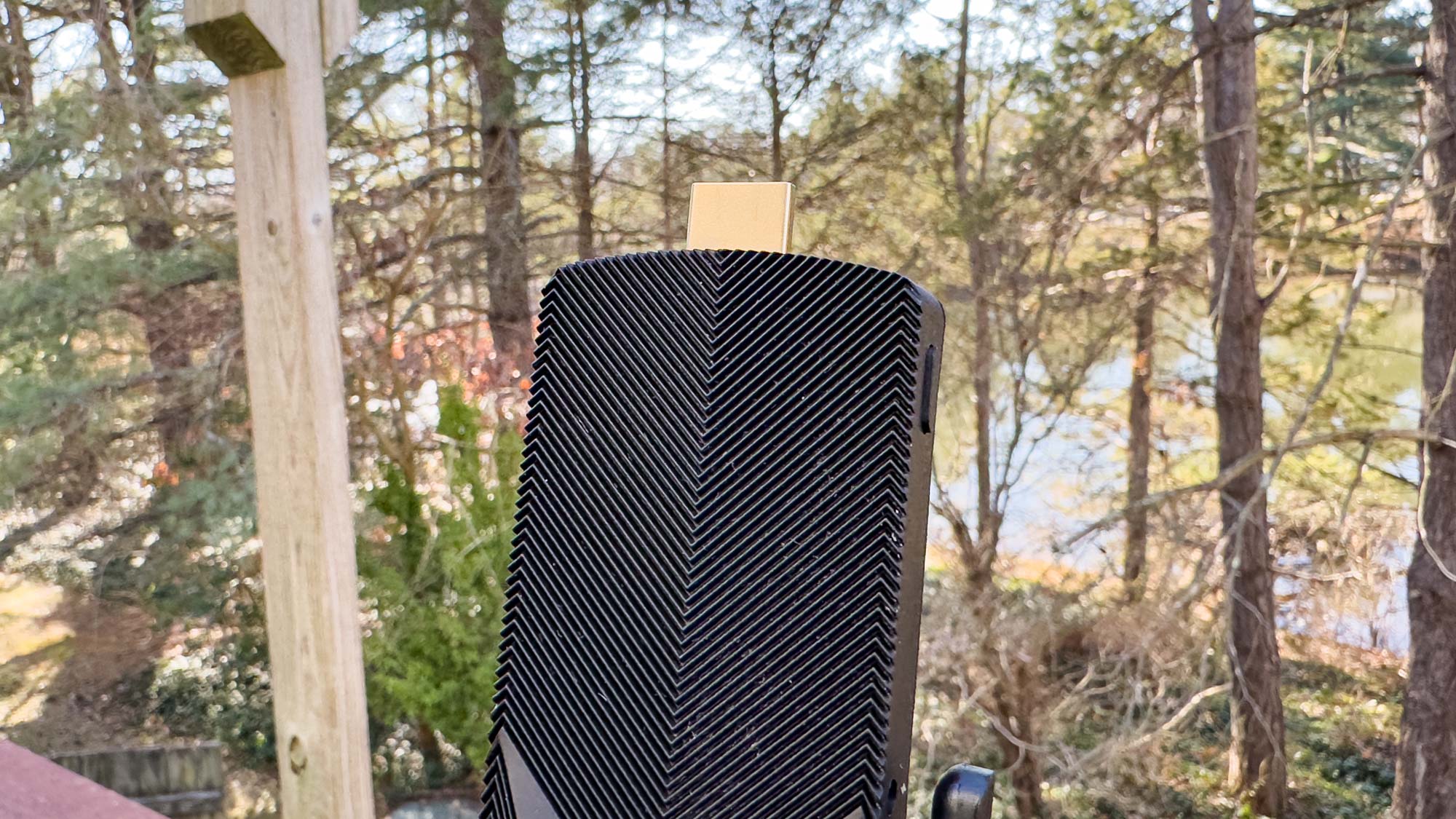
LibreElec is a Linux distribution focused solely on Kodi, a media server environment. It’s extremely lightweight, perfect for the Access4’s limited hardware. But at the $309 asking price, you can get a much better HTPC, like the Geekom MiniAir 11. (Which is also a better desktop.)
Simply put, Windows 10 Pro is too much for the Access4 to handle well. Linux does fare better — I tried Manjaro XFCE and Lubuntu — but that requires learning Linux to use this PC as a desktop, which may not be your cup of tea.
Azulle Access4 review: Verdict
Other than the design, there’s nothing about the Access4 that would inspire me to recommend it. It’s pricey for what you get, which is subpar performance at best. The single Wi-Fi antenna works well enough at least, so long as you have a good wireless signal in your home or office.
Your $309 is best spent elsewhere. If you want the convenience that the Access4 offers — portability and one cable — then I can’t dissuade you. But if you want the minimal desk look, most mini PCs these days come with VESA mounts to attach to the back of your monitor.
The Access4 is a hard pass from me. I couldn’t wait to stop using it, and I look forward to never touching it again. If you’re on a tight budget, I’ve already said that the MiniAir 11 and Pantera Pico are much better options that both cost less than the Access4’s $309 MSRP.
Don’t torture yourself. Save your money and get something better.

Jordan is the Phones Editor for Tom's Guide, covering all things phone-related. He's written about phones for over six years and plans to continue for a long while to come. He loves nothing more than relaxing in his home with a book, game, or his latest personal writing project. Jordan likes finding new things to dive into, from books and games to new mechanical keyboard switches and fun keycap sets. Outside of work, you can find him poring over open-source software and his studies.
